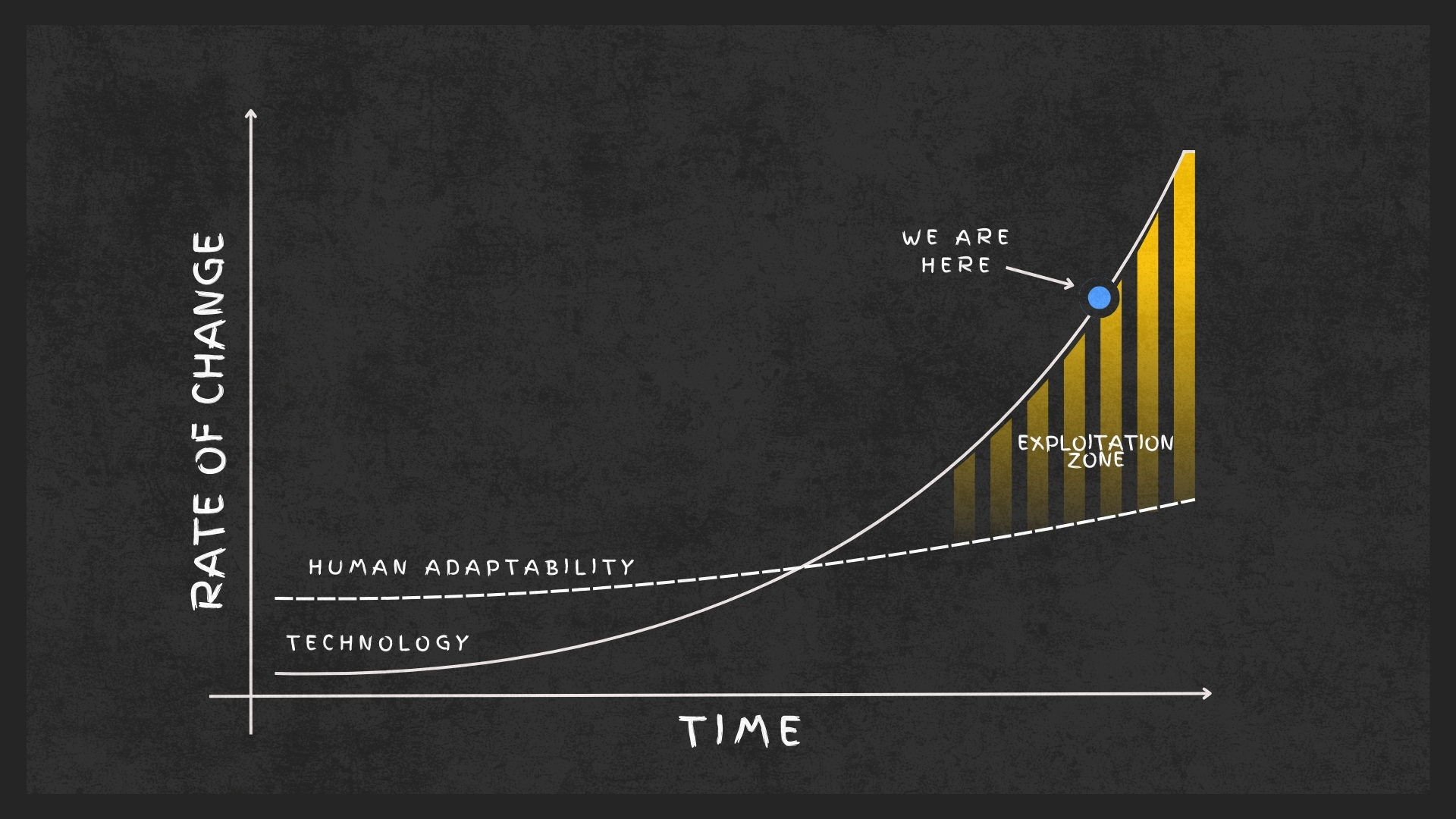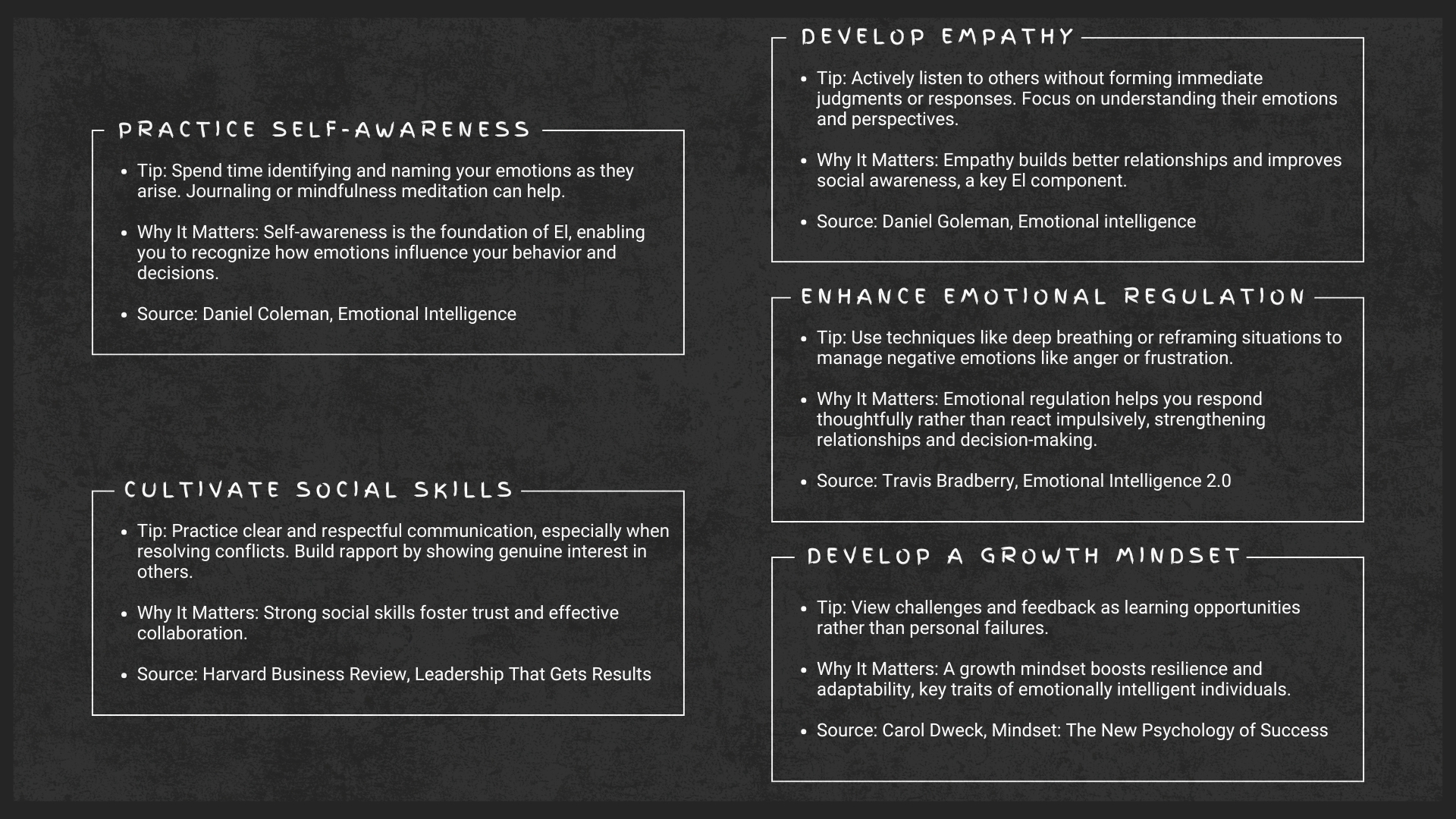Authors: Lee Anderson
Published: February 3, 2025
While humans have been able to develop technological protections, like guardrails, to enable the operation of devices with some level of peace of mind, self-awareness or mindfulness might be the best thing to thwart cybersecurity attacks. Malicious social engineers have always known this and, in the Internet age, have targeted their fellow humans via email phishing, fraudulent texts (i.e., SMiShing) and phone calls (i.e., vishing), and many other types of attacks. Cybercriminals also know that we haven’t and are not likely to adapt to the steep rate of change that technology is undergoing.
Perry Carpenter, in his book FAIK: A Practical Guide to Living in a World of Deepfakes, Disinformation, and AI-Generated Deceptions, has an interesting graph based on Google X’s Astro Teller’s diagram that illustrates where we’re at with the development of technology and human ability to adapt to its advancement (Carpenter, 2024, p. 53). It shows how, very recently, the rate of technological change has surpassed our adaptability. This gap by which it has surpassed us is termed the “Exploitation Zone.” This zone exists because we can no longer keep up with the technology change rate.
Human-designed technological controls and protections are not irrelevant (e.g., passwords, multi-factor authentication, anti-virus protection, VPNs, etc.). They will continue to develop, but the one sure thing you can rely on to keep you safe, regardless of where technology protections are, is to be mindful and emotionally intelligent. But before we get to how to protect ourselves better, let’s ensure we understand why our brains work the way they do, and then the solution will make much more sense.
Survival Instincts
Our brains are designed to prioritize survival. When we perceive a threat, the amygdala—the brain’s alarm system—activates, triggering a fight, flight, freeze, or fawn response. This survival mechanism is automatic and deeply ingrained, helping us react swiftly in situations that pose a physical danger. However, not all threats are physical, and letting this part of the brain take over too often severely short-circuits our logical reasoning.
In the digital realm, cybersecurity risks—like phishing emails or fraudulent messages—can simulate harm to ourselves or those we care about. These perceived threats can activate the same survival instincts, even when immediate danger isn’t present. Recognizing this natural response is key to understanding how it can sometimes work against us in online interactions.
How Attackers Exploit Human Vulnerability
Cybersecurity threats aren’t always real. Attackers know how to hijack this natural process to get us to do something we wouldn’t ordinarily do. Below are a few scenarios that attackers use that you may have heard of before, along with why they sometimes work.
Theme
Attack Scenario
Why it works?
Impersonation of a Relative or Friend in Distress
Impersonating Authority Figures
Fake Charity Appeals
Urgent Tax or Legal Issues
Fraudulent Tech Support
Romance Scams
Winning a Prize or Lottery
Fake Delivery or Package Issues
Mindfulness and Emotional Intelligence
Two tools that can help us navigate cyber attacks and build stronger connections with those we need to protect are mindfulness and emotional intelligence. The site NeuroLaunch has the following to say concerning mindfulness and emotional intelligence:
Mindfulness, in its essence, is the practice of being fully present in the moment, and aware of our thoughts, feelings, and surroundings without judgment. It’s like having a front-row seat to the theater of your mind, observing the show without getting caught up in the drama. On the other hand, emotional intelligence is the ability to recognize, understand, and manage our own emotions, as well as those of others. It’s like having a sophisticated GPS for navigating the complex landscape of human emotions.
When combined, these two concepts create a synergy that can transform our personal and professional lives. Imagine having the clarity of mind to observe your emotions as they arise, coupled with the skills to manage them effectively and empathize with others. It’s like having a superpower that allows you to navigate life’s challenges with grace and wisdom.
The ability to almost stop time, recognize when your brain is being activated, and determine if the perceived threat is real is truly a superpower. You don’t need to do this when crossing a street and seeing a car approaching you. To be sure, there are scenarios where your immediate response is necessary to keep you alive. However, when you are sitting at your desk, working at your computer, or scrolling through your phone, threats are not likely to be imminent, and the superpower of taking a minute to take stock of the situation can seriously save you.
While much of this discussion focuses on cyberattacks, perceived threats often arise in the form of comments or interactions online. These moments can trigger reactive, defensive behaviors that may escalate conflicts or cause harm. Emotional intelligence helps us recognize these triggers, manage our emotions, and choose responses that foster understanding and civility instead of perpetuating negativity. It also strengthens our ability to connect meaningfully with others. Whether defusing tension in an online conversation or showing empathy toward someone who may be struggling, these skills enable us to build healthier relationships and contribute to a more respectful digital community.
At the Innocent Lives Foundation, our goal is to identify child predators online and turn them over to law enforcement. As parents and caregivers, we have to be mindful and have high emotional intelligence as we work to protect our children. If they have been hurt in any way (physically, emotionally, psychologically, etc.), they need us to be at our best to be able to help shepherd them through difficult times, and we can only be at our best when we are taking care of ourselves.
How to Be Mindful and Emotionally Intelligent
The resources available on mindfulness and emotional intelligence are vast, ranging from books and articles to courses designed to deepen your understanding. The tools mentioned here are not exhaustive but serve as a starting point for cultivating greater mindfulness and emotional intelligence. For example, mindful meditation apps like Calm and Headspace offer guided exercises to help you become more present and aware of your daily experiences. Journaling is another powerful practice; regularly writing about your emotions and interactions can uncover patterns in your thoughts and behaviors, gaining valuable insights into your triggers and tendencies. These simple yet effective practices can lay the groundwork for personal growth and a deeper connection with yourself and others.
Perry Carpenter provided the following recommendations in his book FAIK to aid us in increasing our mindfulness.
1. The STOP technique: Concerning this technique, he says, “It’s like a mental speed bump that gives you a chance to think before you leap. Use this before responding to any message that gets your heart racing.”
2. Body scan: Take a quick tour of your body. Are your shoulders up to your ears? Is your jaw clenched? This can clue you in to stress you might not even realize you’re feeling. It’s great to use when you’re scrolling through your news feed.
3. Mindful breathing: Take a few deep breaths before you dive into that inbox. It’s like hitting the reset button on your brain. Bonus: it works great for pre-meeting jitters too!
4. Labeling thoughts and emotions: Give a name to what’s going on in your head. “Oh, hello there, Anxiety. I see you trying to make me panic over this urgent-looking email.” It’s like being the narrator of your own mental reality show (Carpenter, 2024, p. 198).
To increase our Emotional Intelligence, consider the following five pieces of advice:
Conclusion
Technology is advancing faster than we can adapt, bringing both innovation and risk. Cyberattacks grow more complex, and while technological safeguards are vital, they can’t replace human mindfulness and critical thinking. By pausing, reflecting, and using emotional intelligence, we can navigate online threats more effectively and protect our digital and emotional well-being.
At the Innocent Lives Foundation, we work to protect the vulnerable by identifying child predators and supporting law enforcement. Mindfulness and emotional intelligence are key to this mission, helping us manage challenging situations carefully. These principles can empower you to protect yourself and your loved ones online.
Small practices, like mindful breathing or pausing before reacting, make a big difference. They help us resist manipulation, strengthen relationships, and create a safer, more empathetic digital world. We can all contribute to a more secure and connected future by cultivating these skills.








